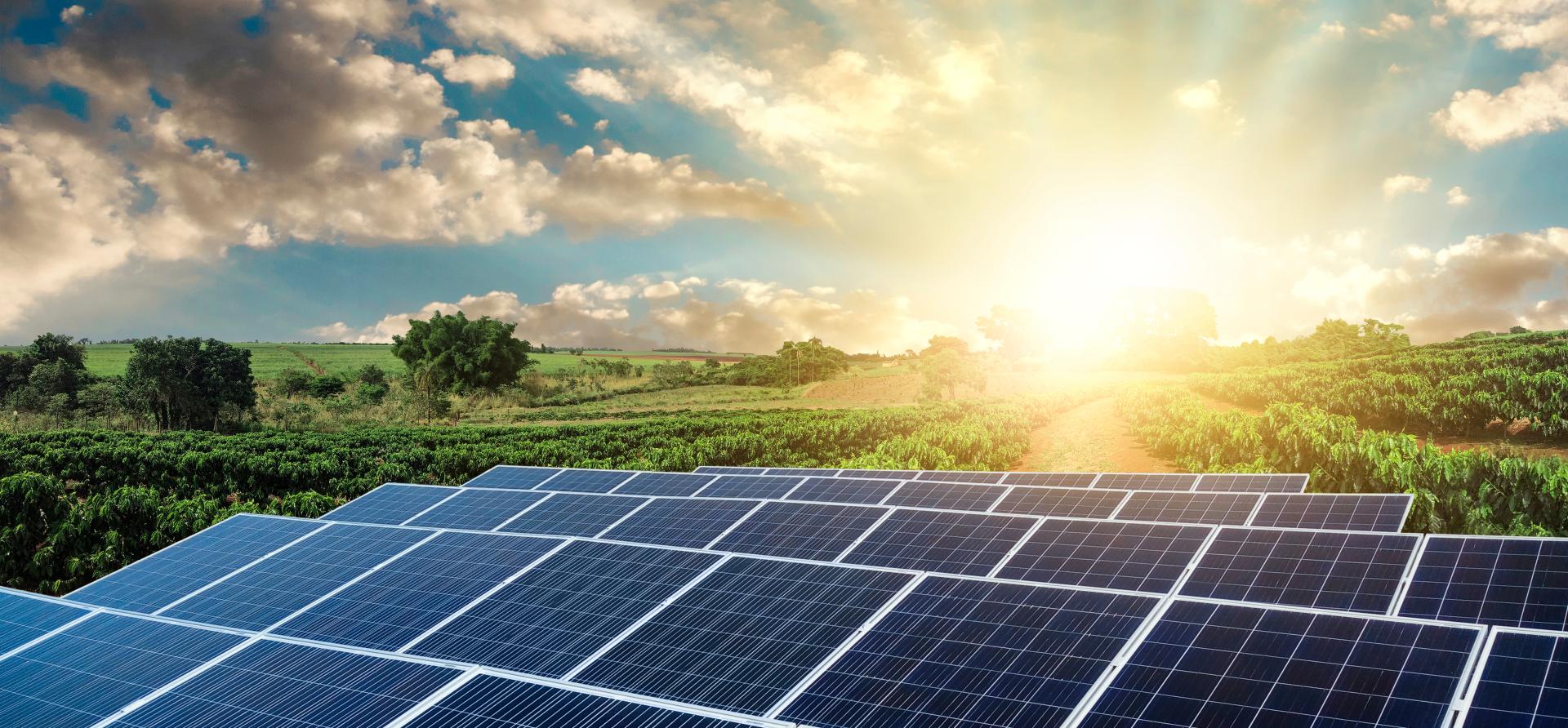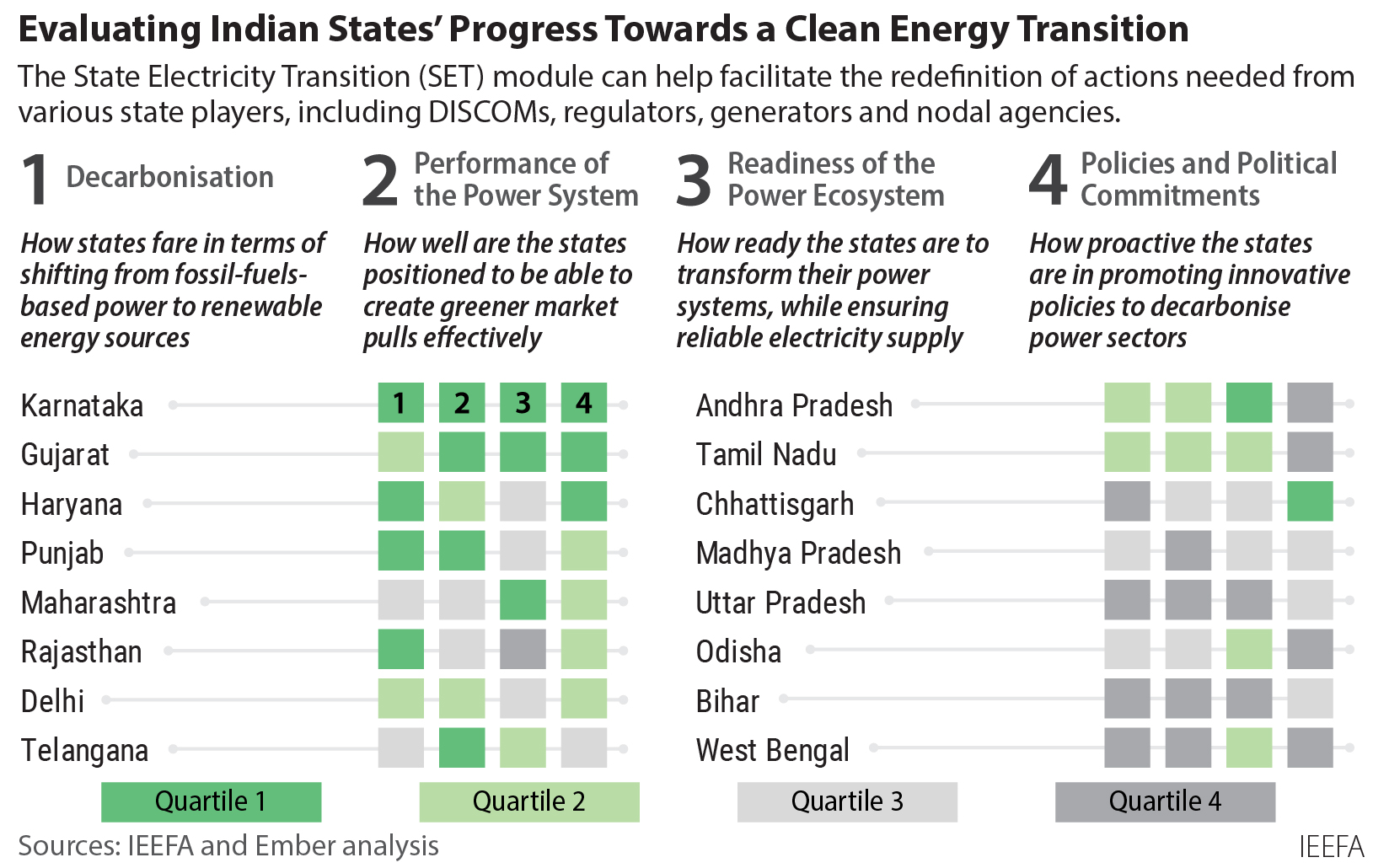
While India’s revised Nationally Determined Contribution (NDC) targets put it on the right path for transitioning its electricity sector, it needs the cooperation of its states. We find that renewable energy-rich states are not utilising their renewable energy generation potential. To fix this, states need to set well-defined renewable energy targets. States rich with renewable energy have the potential to act as export hubs and help other states meet their clean energy targets. At the same time, state energy departments also need to strengthen electricity infrastructure for better integration of renewables. States must also increase participation in green market mechanisms and have more favourable policies for the same. States must also improve data transparency for better evaluation of their progress to take corrective measures. Finally, states must also bridge the gap between electricity transition policy intent and implementation.
The global electricity economy is changing fast. Despite the Russian invasion of Ukraine highlighting continued heavy dependence on fossil fuels, the world will add as much renewable energy in the next five years as it did in the previous 20 years.
India, now with the G20 Presidency, will be key to the electricity transition.
India, now with the G20 Presidency, will be key to the electricity transition. It ranks 8th in the Climate Change Performance Index (CCPA) 2023 and earned high ratings in the Green House Gases (GHG) Emissions and Energy Use categories, as well as a medium for Climate Policy and Renewable Energy.
Decarbonisation, decentralisation, and digitisation are widely regarded as the three pillars of achieving net zero targets. We find that while India is on the right path with revised Nationally Determined Contributions (NDC) targets, the absence of roadmaps and concrete action plans hampers it from achieving the targets. In addition, India also needs its states' cooperation and leadership to achieve ambitious national and state climate targets.
To help chart the roadmap and identify the areas that require action and attention, we devised the States’ Electricity Transition (SET) Scoring system. We analysed 16 Indian states that account for 90% of the country’s annual power requirement on four key dimensions of electricity transition. We identified and finalised these dimensions through several expert consultations. The dimensions are: 1) Decarbonisation (state’s preparedness to shift away from fossil-based power), 2) Performance of the power system (state’s ability to incentivise greener market participation), 3) Readiness of the power ecosystem (state’s power system reliability to ensure electricity supply for the transition), and 4) Policies and political commitments (state’s policies to push for power sector decarbonisation).
Key messages:
- Indian states have shown notable clean electricity transition performance. The performance of states like Karnataka, Gujarat, Haryana, and Punjab, which have demonstrated considerable efforts in overall preparedness and committed capabilities to promote clean electricity, indicates the progress of Indian states towards a clean electricity transition.
Karnataka is the only state that scored well across all the dimensions of clean electricity transition identified in this study. It was the best-performing state in decarbonising its power sector, the performance of its power system and the readiness of its power ecosystem. It also has conducive policies and political commitments for a smoother transition. Gujarat was a little behind Karnataka in terms of decarbonising its electricity sector. Similarly, Haryana and Punjab have shown promising preparations and implementations for electricity transition in their respective states.
- States must still ramp up their efforts to maximise renewable potential. Bihar, Uttar Pradesh, and West Bengal must expand on their potential and transition commitments as they have many areas to improve upon to strengthen their clean electricity transition performances.
The three states fared lower than their counterparts in decarbonising their power sectors and the performance of their power systems. The power systems in Bihar and Uttar Pradesh require further improvements to support a clean transition. For West Bengal, while its power system showed better performance than the other two states regarding readiness to transition, a move away from a fossil fuel-intensive power sector requires more proactive policies and political will.
- Rajasthan and Tamil Nadu have started their clean electricity transition, but progress has not been consistent across all the dimensions. As the long-considered front-runners in building new renewables capacity, these two states, unsurprisingly, showed promising progress in decarbonising their power systems. Still, they fell short in their respective power sectors' relative performance and readiness to transition to clean electricity.
We provide a snapshot of our SET Score analysis in Figure 1. The intention of the SET Scores was not to rank states but to analyse their performance, acknowledge their efforts and highlight their challenges.
Figure 1: Macro Performance of 16 States on Electricity Transition Dimensions

Source: IEEFA & Ember Analysis
This analysis concludes with the following recommendations to accelerate the sub-national electricity transition. A snapshot of the recommendations are:
- Multi-dimensional efforts are needed to ensure an effective and sustainable electricity transition. Efforts are required to decarbonise the supply-side through more renewable deployment and revamp the demand side through energy-efficient intervention. In addition, strengthening of transmission infrastructure is crucial for better integration of renewables.
- States should increase participation in green market mechanisms through more favourable policies like open access and banking of power. Innovative bilateral financial markets mechanisms like Virtual Power Purchase Agreements (VPPA) and Contracts for Difference (CfD) have huge potential to open the market.
- State-level data availability and transparency need improvement to measure and track progress. The centre and states need to coordinate better to regularly capture state-level data updates on existing national portals.
- States should ensure effective and timely implementation of clean electricity transition policies like no coal, green manufacturing, direct benefit transfers, green energy open access and more.
To download the media kit, social media graphics and the entire data set for this report, please click here.

















